One of the finest conceptual artists I have encountered is the British artist, Cornelia Parker.
She creates works in a collaborative way sometimes getting lots of people to make small contributions to something grand. One such work is based on the Magna Carta.
Or, more precisely, the Wikipedia article on the Magna Carta a charter of rights from 1215 written by the Archbishop to give the king and barons terms of peace.
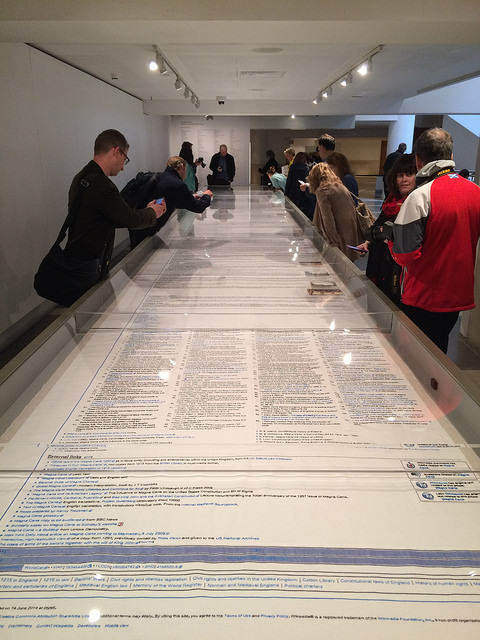
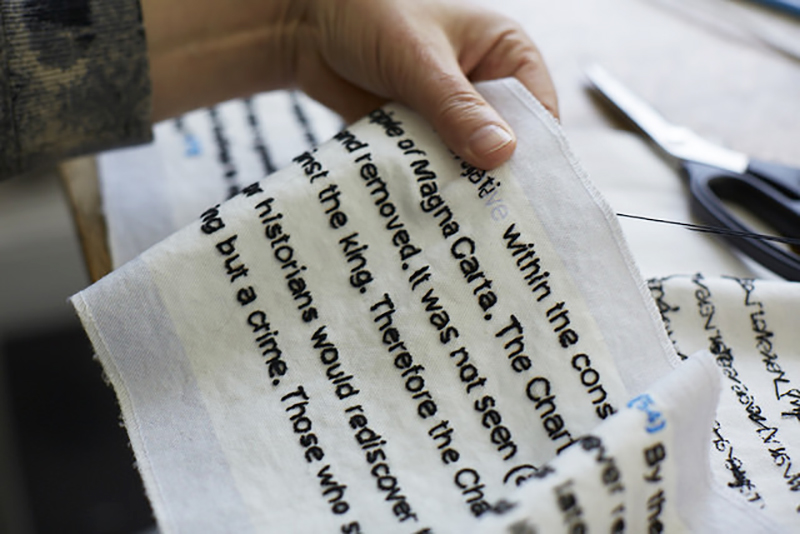
799 years later, Parker re-presented the historic text by coordinating an embroidery of the Wikipedia article on the Magna Carta. It’s nearly 13m long and was embroidered by many: school children from around the world, prisoners, Barons and Baronesses, and High Court Judges.
Julian Assange embroidered the word freedom. Germaine Greer took up needle and thread. According to the Wikipedia article about the work about a Wikipedia article, you can see among the needlework a tea stain from a prisoner and a spot of blood from editor of Guardian.
When displayed, there is a mirror underneath so you see the embroidery from both sides.
Can you feel the dynamics: past and present the powerful and powerless; a document for the elite; a document of the people.
We are all both observers and participants in the values of this “ancient” text.
To Christians, the notion of being observers and participants in the values of an ancient text should sound quite familiar.
The best theology, evangelism and preaching is like this: inviting us to observe and participate, to see the tensions, to look at things from both sides, but, then, to be drawn into the deep significance and haunting relevance of living, biblical words penned so long ago.
Here’s a commission you may never have heard before: Do your work as preacher, pastor, missionary or evangelist with the perspective of a conceptual artist.
Parker’s penchant to reveal the hidden and to re-imagine relationships can be seen in her breath-taking installations:
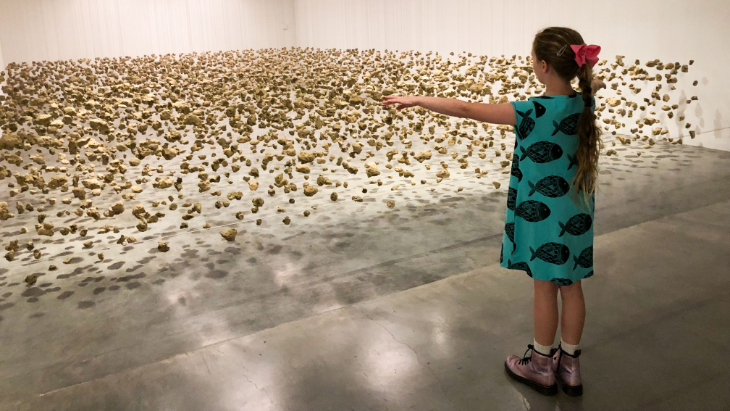
These are rocks excavated from under the Leaning Tower of Pisa to help stabilise it: Subconscious of a Monument.

This is her garden shed that was taken to a field, blown up by the British Army and then installed in art galleries at different times and places.
These words have an elegant beauty. There’s an impressive precision needed to suspend so many elements and the effect is to freeze a moment of time in a way that has a reverent, meditative quality.
Readers of the Bible will be curious about Parker’s work, Thirty Pieces of Silver.
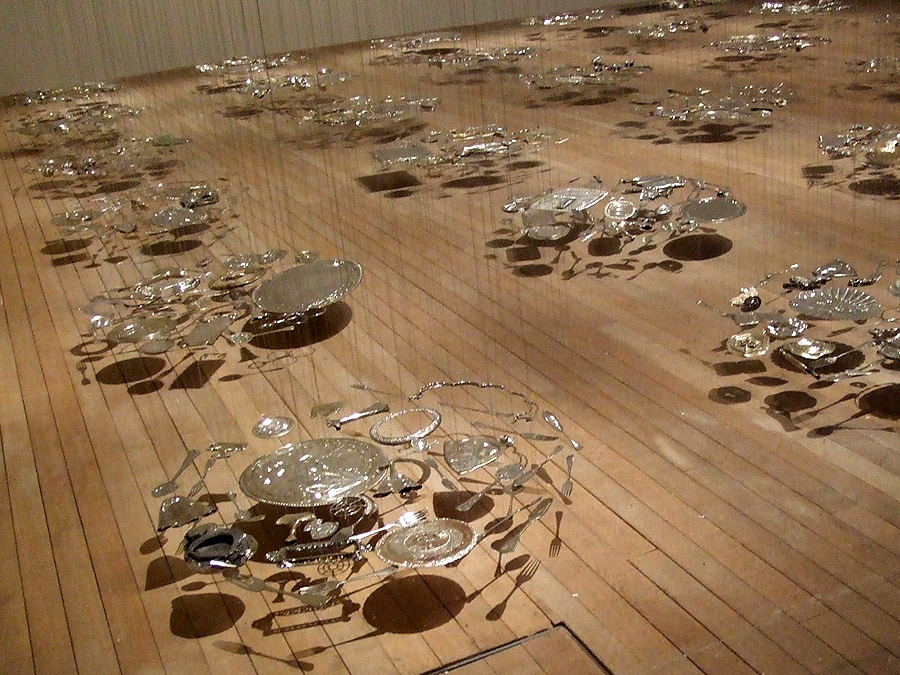
Parker has identified the deep significance and painful irony of this biblical expression.
It begins in the book of Zechariah. It’s the payment of a shepherd no longer continuing to lead the flocks (see Zech 11:12–13). Some scholars think it a large amount while others feel that the phrase has an ironic sting. It is, of course, is the price paid to Judas for betraying Christ and the money Judas cannot bear to keep.
Thirty pieces of silver is of unspeakable value: the price of the life of the eternal second person of the Trinity.
Thirty pieces of silver is nothing: insulting, petty money cynically offered for a sordid act.
Parker feels the irony.
In her installation she is playing with the number thirty. There are the representations of thirty coins, yes, but each “coin” itself is made from thirty or so pieces of silver. So, is thirty pieces of little value or a lot of value? She is playing the word piece. We hear it as coin but she hears it as teapot, trombone and trophy. Silver becomes silverware and thirty coins become something much more valuable but coins are flat and teapots, trombones, trophies are not.
So, what does Parker do?

She employs a person with a steamroller, lines up all the silverware in the street and everything gets flattened.
Notice the questions raised yet again: are these pieces valuable or are they just rubbish?
Are they discarded, useless objects: worth rolling a bulldozer over, only good to throw out on the street, discarded, rejected, even crucified objects?
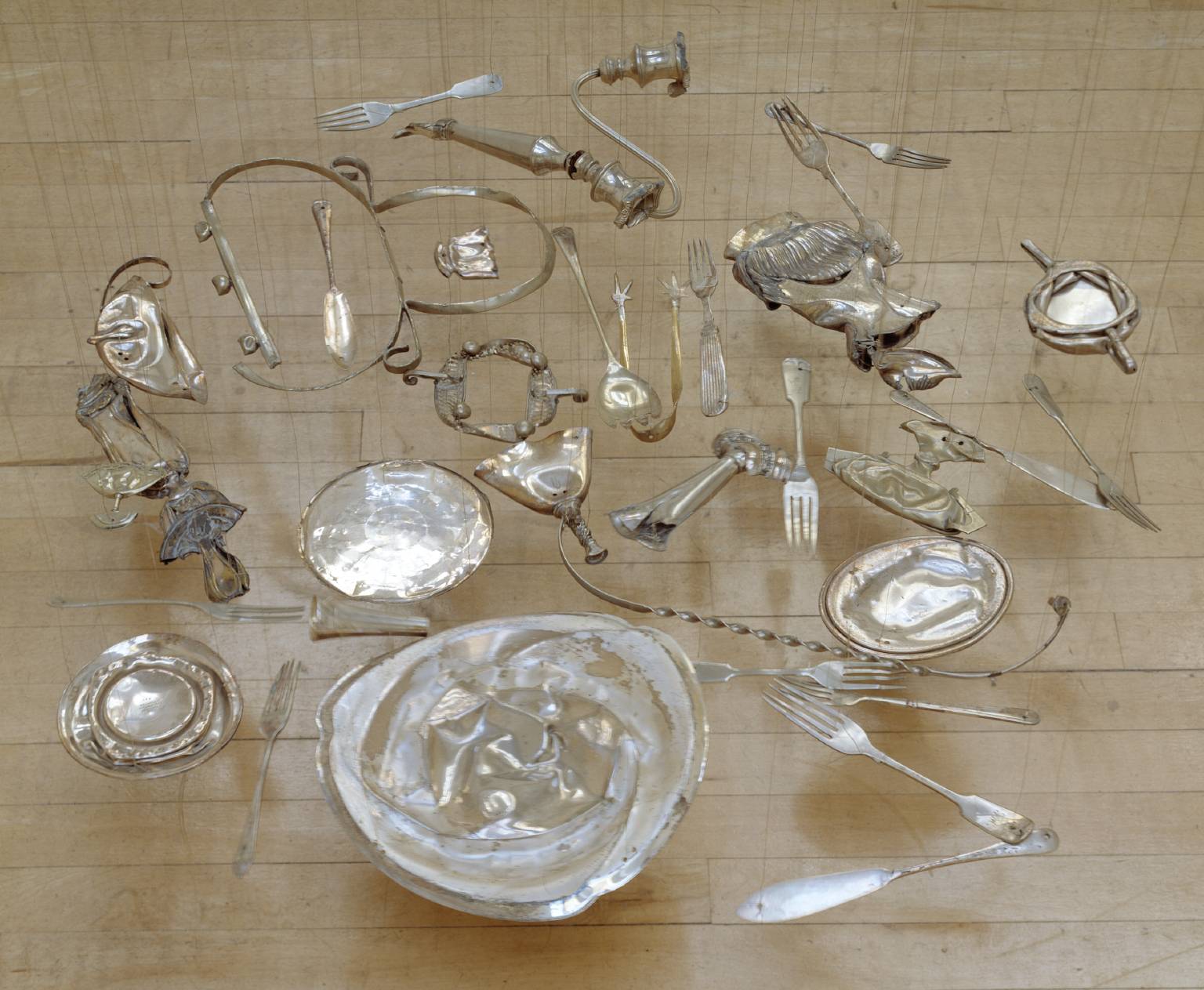
Parker is asking all of us: are thirty pieces of silver valuable or not?
And, for those who have ears to hear, we ask ourselves is Jesus valuable or not?

